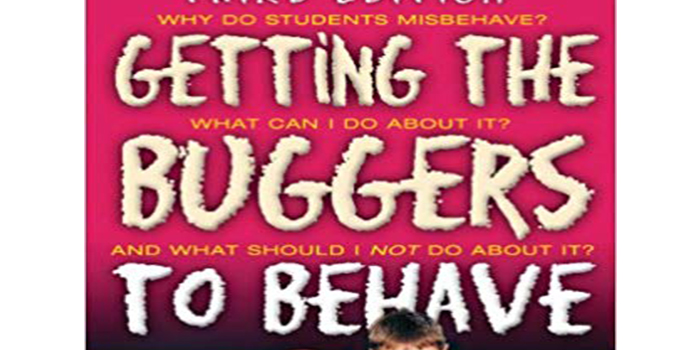The title notwithstanding, this book is a useful and insightful guide to managing a classroom successfully, offering detailed suggestions on how to be an effective leader and teacher in any situation, no matter how difficult the environment. Some of these suggestions are more relevant than others and the book covers both primary classroom management and secondary management, but here we are focussing on the secondary stage. It is important to note, however, that these suggestions are generic, and therefore extra consideration should be taken with any new school you visit, as all pupils and classes are unique and you should find a combination of techniques and strategies that work best for you.
The key points to take are:
-
Be reasonable, but don’t reason with students; in other words, be realistic with your requests from students and what you expect of them, but don’t allow yourself to be drawn into a debate about whose fault something is.
-
If you’re faced with bad behaviour, try to use statements rather than questions, so instead of asking ‘why have you done this?’ you can say ‘you shouldn’t do that if you want to leave class on time.’
-
Set challenging but realistic targets and time limits in the class so that students can partake in varied activities and the lesson can be a more varied and stimulating experience for the students, as opposed to something which may become repetitive and boring, leading to bad behaviour.
-
Be a role model for all students all day; this includes being polite, professional, helpful and calm in any interaction. Keep in mind that some students aren’t used to seeing adults maintaining their composure in negative interactions, so it’s up to you to set that example for them.
-
Non-verbal communication works really well according to many teachers, so using body language rather than verbal interaction to highlight negative behaviour.
-
Vary your speech pace when delivering instructions and talking to the whole class; this can surprise students and keep their attention focused on you.
-
Be confident and show this in your body language by moving around the room, using your arms and hands, and maintaining good posture.
-
Treat students as people; they deserve just as much respect as anyone else in the school and will notice and appreciate when you afford them that respect. If a student is being difficult, try to think of what kind of a day they may be having before concluding that they’re just out to get you and disrupt your lesson. This is key for the students of today, it’s not easy being a teenager and an understanding and patient teacher will always get the best out of pupils.
-
Be creative in the classroom! Speak to staff at the school about how far you can take this tip before trying it, but, if possible, you should consider changing up the structure of the lesson and even the class setting, including moving tables and chairs around.
-
Lastly and perhaps most importantly, remain calm always and never shout; you can raise your voice if need be but shouting should be the absolute last resort. Students respond to firm but calm teachers, so make your expectations clear from the start and ensure that they’re followed throughout the lesson.
Another useful thing to note is what students themselves consider as attributes of a great teacher: the top three were ‘funny’, ‘nice’ and ‘bubbly, so if you don’t consider yourself particularly funny, you can certainly be nice and bubbly! Plenty of rewards were also noted, so positive reinforcement over negative for sure. Finally, ‘proper conversations’ were given high importance by students, so if you’re able to take the time to speak to students on your way around the room you’ll find yourself better appreciated by the students and find them more attentive when you’re giving instructions.
Additional reading for this topic: ‘Teach like a Champion’ by Doug Lemov; ‘You Know the Fair Rule: Strategies for Making the Hard Job of Discipline in Schools Easier’ by Bill Rogers.



.jpg)


%20(1).png)
%20(3).png)
